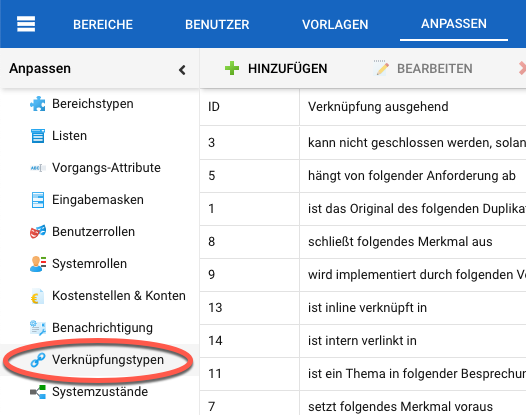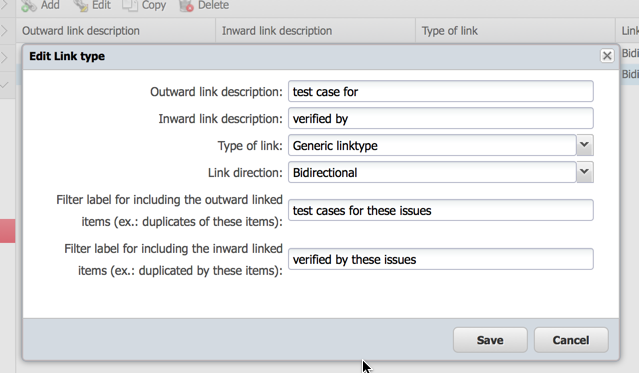Linking Items#
Items can be related hierarchically through parent-child relationships or freely with each other through links (links).
A parent-child relationship implies that you can only close parent items when all child items are closed.
There can also be other types of item relationships. After installation, you can use the following link types:
Item cannot be closed unless the linked item is closed. This is similar to parent-child behavior, but can be used outside of a hierarchical relationship. It can be useful, for example, when components are used by a series of projects.
MS Project Task dependencies offer the following sub-types:
Finish-start: item starts when the previous item is finished
Finish-finish: items must be finished simultaneously
Start-start: items must start simultaneously
Start-finish: item ends when the previous item starts
All these relationships can be extended with a time delay, like an item starting three days after the previous item has finished.
Item is a duplicate of the related item.
Item is a test case for the related item, which could be a requirement or a feature request.
Link Types#
Allegra allows you to link items with different link types, such as “is a duplicate of” or “is a test case for requirement”. This section explains how you can create and manage your own link types.
You must be logged in as a system manager or system administrator.
Links allow you to connect items with each other. There are unidirectional and bidirectional links.
Allegra distinguishes between outgoing links and incoming links. An outgoing link refers from the current item to the remote item. An incoming link points from remote items to the current item.
For each link type and link direction, you define a set of labels:
A label for the outgoing direction
A label for the outgoing direction
A label for the filter expression for the outgoing link direction
A label for the filter expression for the incoming link direction
Switch to the “Administration” perspective. In the main menu, select Customize > Link Types.

To add a link type, click on the “Add” button in the toolbar. To edit a link type, highlight it in the right table area and then either use the context menu or the toolbar button labeled “Edit”.

For more background on linking items, see Linking Items.
The filter expression labels can be imagined as an addition to the expression
“Include all items that …”
Example: “Include all items that …” are duplicates of these items.
The term “these items” refers to the items selected by the rest of the filter.
Save your link type.
You can now use your link type to connect items that would otherwise have no relationship or only a hierarchical relationship to each other.
